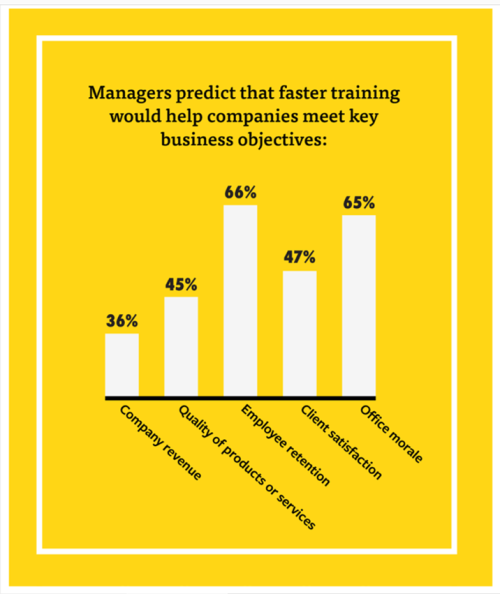
I’ve written here before that middle managers are the tip of the spear, organizationally speaking, for everything. Productivity? Check. Change management? Check. Communication? Check. Culture? Check. Engagement? Check. Talent development? Check. Retention/turnover? Check. Everything.
I ran across a good little white paper from Grovo, a workplace learning company, that underscores this point, yet again. Good Manager, Bad Manager: New research on the modern management deficit and how to train your way out of it, is a quick read and reminds us yet again that training middle management might be the most critical item on your training and development agenda.
“Management isn’t like riding a bike, where you learn it once and you’re set for life.”
This opening statement frames the discussion in this paper which reports that 99% of companies do offer some sort of management training and 93% of middle managers frequently attend it. These statistics notwithstanding, Grove has found that this training is deficient in three key ways:
- Not comprehensive: 98% of middle managers believe that the managers in the organization need more training
- Not timely: 87% of middle managers wish they had received more training when they first became a manager
- Not habitual: 61% of managers report that training is offered only a few times each year and 11% report training being offered only once a year.
Grove has survey data that suggests that 98% of managers believe that key performance metrics would improve if managers were trained to be effective more quickly:
With $15 billion spent by U.S. organizations every year on leadership development, it seems we could really ramp up the ROI on that investment by getting to new leaders faster, with more frequent and engaging training. Looking at it another, way, Michelle McQuaid predicts that better, more capable middle managers can save organizations $360 billion annually in productivity increases.
This report is full of gold as you plan your 2017 training/development activities and budget. I’d encourage you to take a look. Maybe you can capture some of the $360 billion in productivity increases in your organization while you sharpen the tip of your spear.









